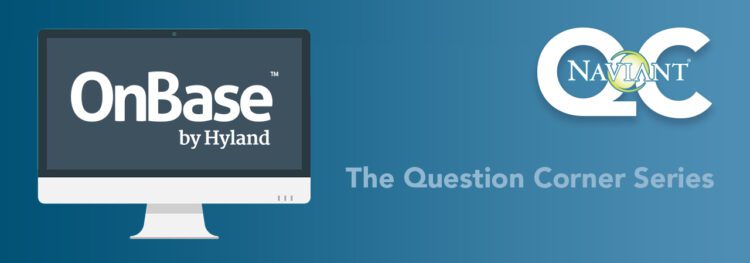Human Resources plays a critical role in every company’s digital transformation. And according to incoming 2025 HR technology trends, HR departments are projected to deliver on this responsibility by:
- Cutting out point solutions for more flexible tools
- Retaining top talent by creating and facilitating upskilling, reskilling, and ongoing learning
- Improving the employee experience with technology
- Integrating flexible work models using technology
But there’s one catch – to execute any one of these initiatives, you need time. And if you’re like many HR professionals whose departments haven’t yet undergone transformation, that’s a resource you’re lacking in.
If you’re stuck in a situation like this, you’re all too familiar with the manual, error-prone processes that dominate your days. Even more, you’re probably also used to picking up the slack from the single-purpose tools that can no longer “do it all” as your company has evolved over time.
The problem: With these challenges consuming all your time, you rarely have time for the “human” side of HR, like improving the employee experience.
But successful transformation hinges on these positive work environments and employee experiences. If your workers aren’t on board with transformation or feel left behind, they’re not going to adopt your new tools and processes. The good news is that HR automation can free up your HR professionals’ time for creating these healthy, fulfilling experiences while delivering many other benefits. Let’s explore 6 of the most impactful processes that HR departments can automate in 2025 so you can take back your time:
6 Processes to Automate in 2025
1. Payroll
There’s a very high potential for error when it comes to the manual collection of employee hours and days worked, as well as sick or vacation time. Plus, it’s extremely tedious and time-consuming. To avoid these headaches, employ HR automation to track and calculate everything automatically. This use of HR automation will also save you significant time to repurpose on other important work. As a bonus, you’ll find that data is much easier to find as needed, such as in the case of compliance audits.
2. Recruiting
Attracting and retaining quality talent is a key determinant of success for organizations today. It’s become a constant and urgent pursuit. Automating time-consuming, multi-step recruiting tasks must be a priority. HR automation can simplify and standardize tasks like:
- Posting job ads
- Response Tracking
- Pre-Employment Assessments
- Resume Screening
- Classifying and Prioritizing Candidates
- Emails to Update Candidates on their Application Status
Going digital with the recruiting process has other benefits, too, like electronic forms with mandatory fields eliminating the frustration of incomplete documents. HR automation also helps you find better quality candidates by expanding and increasing your pool of applicants. But a higher volume of applications doesn’t mean more work for you, as automation sorts and prioritizes them based on your pre-set criteria. A faster, smoother application process is also appealing to applicants. It is especially millennial and gen-z job seekers who are increasingly taking over the workforce each year.
3. Performance Management
Data visibility is a significant benefit of HR automation, particularly when it comes to performance tracking. Automating performance records increases the accessibility of data that informs decisions like bonuses, raises, disciplinary actions, and termination. HR automation technology makes it easy to track and view these records as needed, as well as add notes. Plus, automating performance management eliminates bias and enables better decision-making.
4. Onboarding and Offboarding
Onboarding requires the coordinated efforts of multiple departments and organized information passing, which can be tricky when manual. Automation can help keep all your important information organized and easy for relevant employees to access. This technology can:
- Create automatic approval and notification workflows
- Accelerate access to applications and tools offer e-signed forms
- Automatically create official PDFs
HR automation uses these capabilities to automatically route important documents to the right people and notify users regarding which tasks need to be completed and when. It also improves your onboarding process by helping you create and follow best practices. As a result, you can offer your new hires a smoother welcoming experience.
Although it’s commonly overlooked, the offboarding process is equally important to onboarding. You can use HR automation to complete routine processes, like:
- Schedule exit interview
- Fill out and upload necessary documents
- Update personal information
- Schedule the final paycheck
- Create requests for company equipment returns
- Remove application access on a specified date
- Remove them from the company directory
5. Employee Training
As your digital transformation evolves and new processes and tools are introduced, your new and existing employees will need training. Unfortunately, this is a huge obstacle for many organizations which still rely on traditional training methods. Instead of finding scarce pockets of time where two employees are free for 1:1 training, allow employees to train at their own pace. HR automation technology can help employees complete in-depth training online using apps, webinars, and portals. The technology uses exercises and quizzes to ensure that each trainee understands topics before it moves forward. This safety guard prevents confusion and future mistakes. Having efficient training tools will also make reskilling and upskilling easier for your organization, which has many benefits of its own.
6. Employee Benefits
HR automation makes employee benefits management easier for you and more transparent for your employees by enabling employee self-service. It can track employees’ individual situations and display their available benefits, which update when circumstances change. It also helps them explore different benefit options and alternatives, breaking down the differences between them. You can configure the software so it takes certain matters into consideration when building a personalized retirement plan.
Empower HR to Drive Transformation
Automating manual HR tasks enables the entire HR department to shift from an administrative, operational department to a business-driven strategic department on the frontline of your transformation. It allows them to provide the agility your organization needs to thrive now and in the future.






